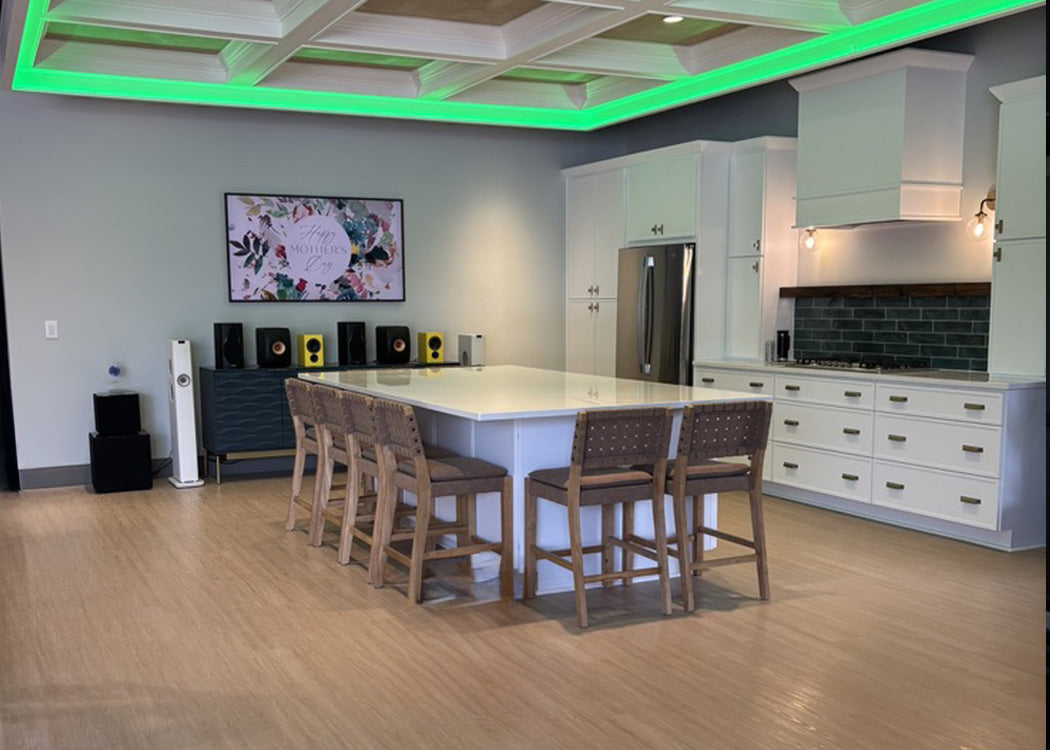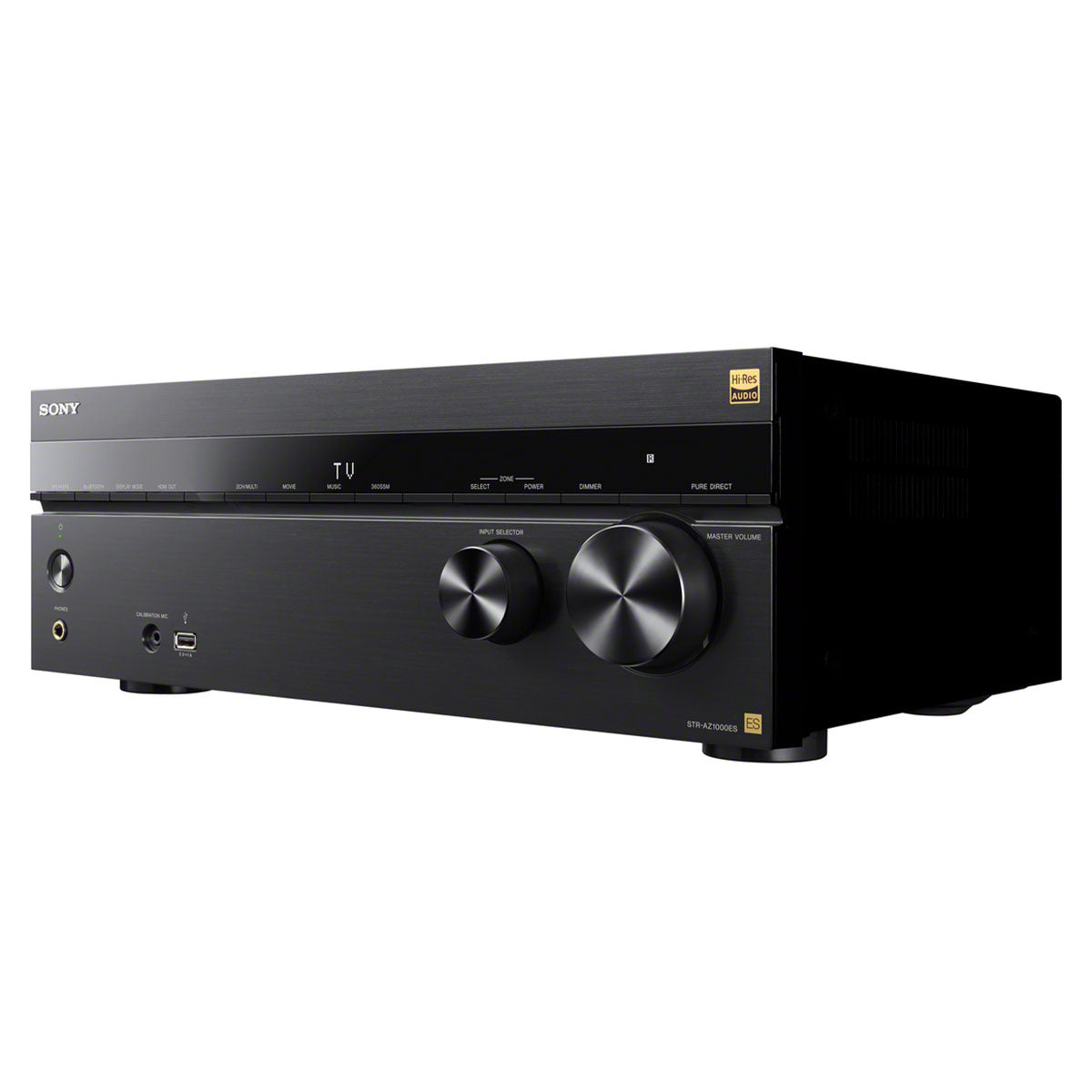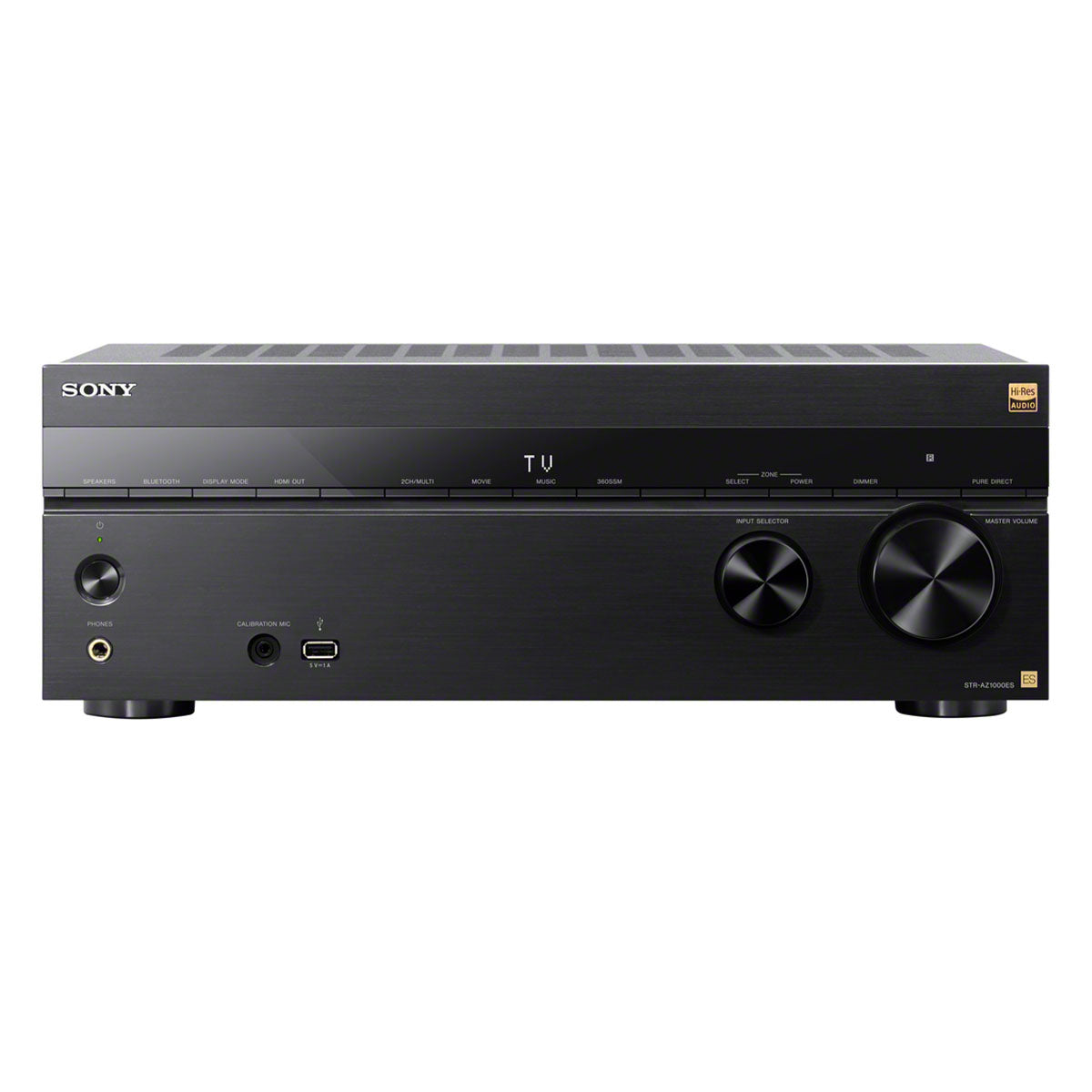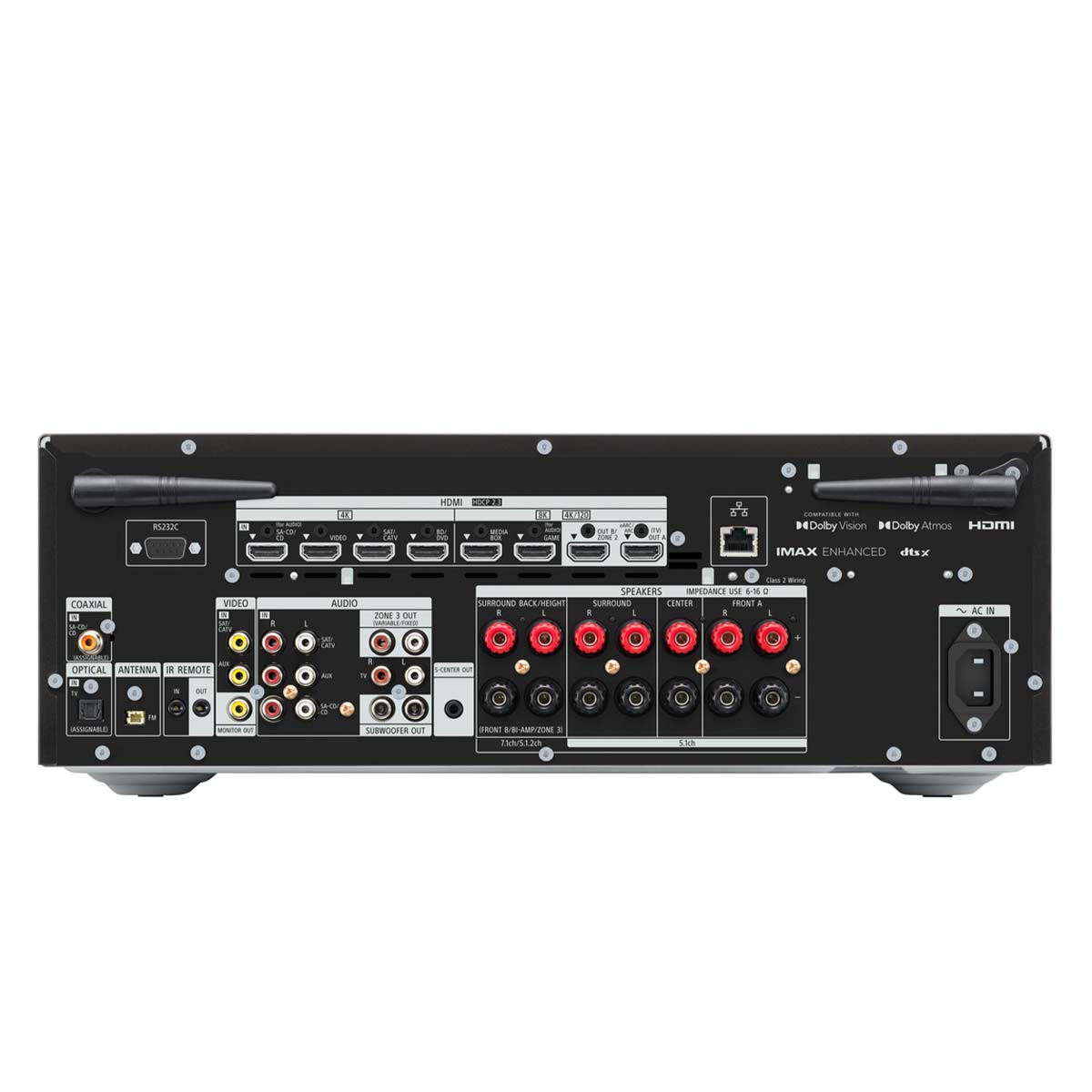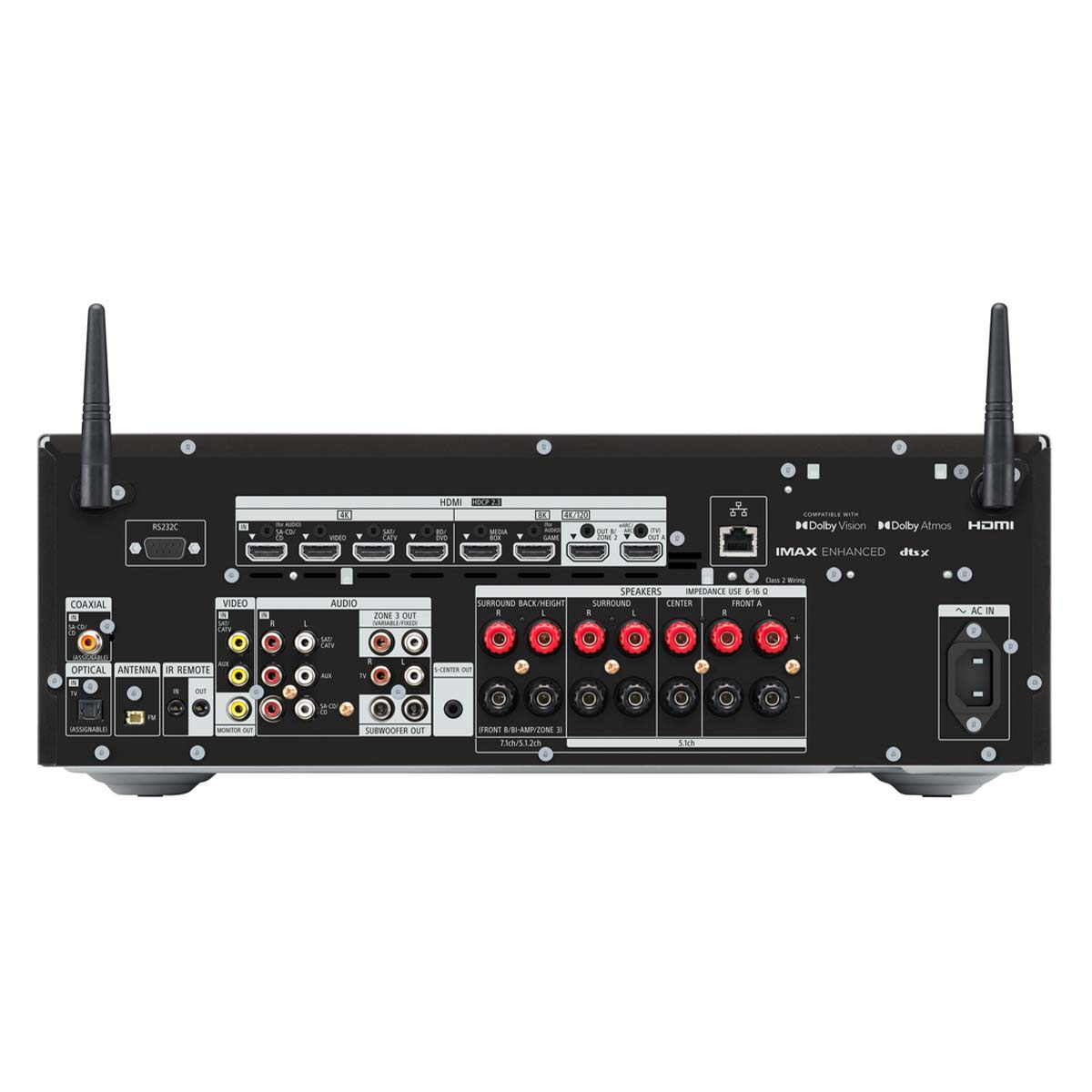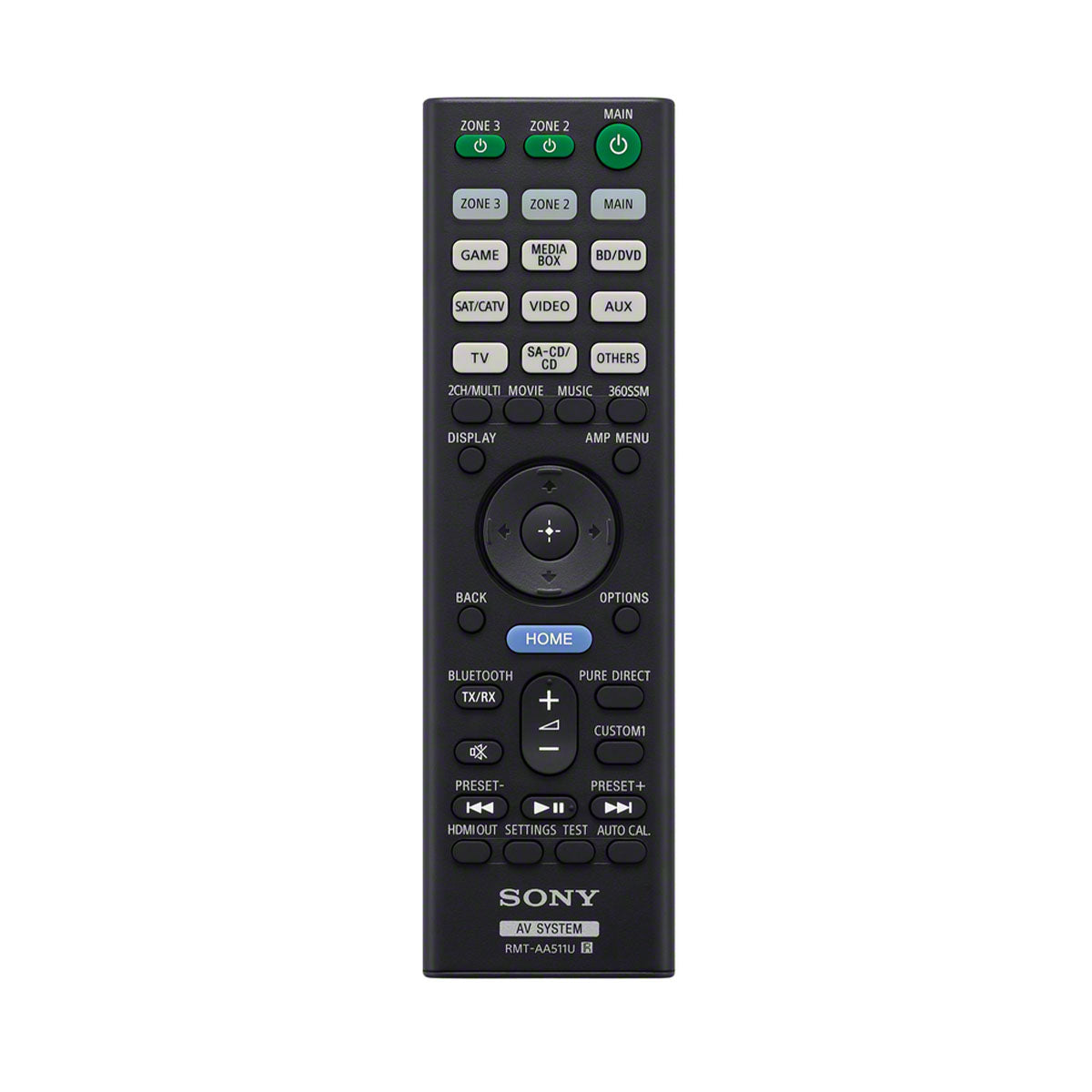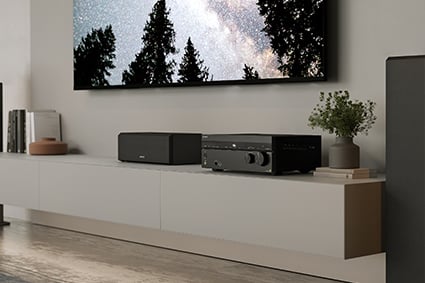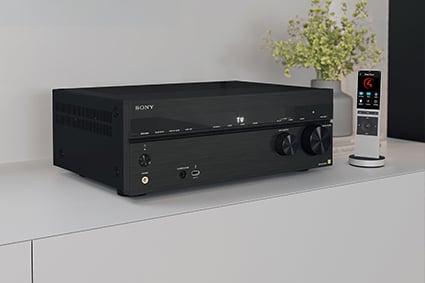Sony STR-AZ1000ES
Couldn't load pickup availability
Free Shipping On All Orders, No Minimums.
We offer free 2-day shipping on most products within the continental US.
Weekdays - Orders placed by 2pm EST ship same day. Orders placed after 2pm EST will ship the following business day.
Weekends - Orders placed on Saturday and Sunday will ship Monday.
Orders requiring motor freight delivery may take more than two business days. Once your order has shipped, you'll receive a shipping confirmation email with a tracking number for easy tracking.
Orders that contain items that are currently backordered, special order, or out of stock will ship complete once all items are in-stock unless otherwise requested.
If you need it faster, you will have the option of choosing a quicker shipping option when you checkout on the website.
At this time, we do not ship internationally and orders to Hawaii and Alaska may incur an additional shipping charge. Please contact us at 888.899.8776 or email support@audioadvice.com to confirm.
Rerouting and Address Changes
We cannot make ANY address changes once an order is placed. If you are unable to accept delivery of your package as ordered, we will need to cancel your order, return the package to sender and have you replace your order through our website.
Keep the Box
We suggest you keep the shipping box or boxes for at least 30 days. It is actually a great idea to keep boxes for audio products for the life of the product. Having the box and all packing will increase the trade-in value should you decide to move up and they are handy to have should you ever need to send the unit in for repair.
How To Receive a Motor Freight Order
The trucking company will contact you to schedule a convenient time to deliver the order. Please note that you must be present for delivery.
Visually inspect the box to make sure you see no signs of damage. If you notice any damage at all, take some pictures with your phone and make a note of them on the delivery receipt the driver will ask you to sign. If it is obvious that the product is damaged, please refuse the order and contact us immediately at 888.899.8776 or email support@audioadvice.com.
Open your box as soon as possible and inspect the product for damage and contact us if you find anything wrong.
FedEx Freight Service Comparison
| Feature / Service | Scheduled Curbside Delivery | White Glove Delivery |
|---|---|---|
| Scheduled delivery appointment | ✔ | ✔ |
| Delivery location | Ground level only (garage, front door, loading dock) | Room of choice, any floor |
| Delivery team | 1 person | 2 people |
| Placement inside home/business | ✘ | ✔ |
| Upstairs / downstairs delivery | ✘ | ✔ |
| Unpacking | ✘ | ✔ (upon request) |
| Packaging removal | ✘ | ✔ (upon request) |
| Assembly / installation | ✘ | ✘ |
| Old item removal | ✘ | ✘ |
At Audio Advice, we pride ourselves on customer satisfaction. We'll bend over backward to make sure you're 100% satisfied and we won't accept anything less. We offer 30-day hassle-free returns and personalized service from real, live people.
If an item doesn't meet your expectations, you may return or exchange it in its original condition and packaging within 30 days for a full refund, minus shipping fees. Items shipped back in like new condition through standard shipping carriers will only incur a flat fee of $15 to return. If the items were initially shipped through free scheduled delivery via motor freight (commonly referred to as LTL), returning them will result in return shipping fees starting at $150. These items include but are not limited to, oversized items such as TVs, certain subwoofers, floorstanding speakers, furniture, and most items weighing over 75 pounds. Return fees will also apply for exchanges. We want to treat your system as if it is our own and want you to be completely satisfied with your purchase.
Please see the instructions below. We only accept returns for any product purchased directly from our website. If merchandise is not returned in its original condition or is missing packaging, manuals, accessories or other parts, or the resale value of the product has been impaired, a partial refund will be given and calculated on a case-by-case basis.
Non-Returnable Items
The following items cannot be returned or cancelled:
- Special/Custom Order Items
- Open Box Products
- Gift Cards
- In-ear headphones cannot be returned once the packaging has been opened due to personal hygiene reasons. Please contact our customer care team if you'd like help choosing.
-
Turntables With a Broken Stylus: All turntables ship out with the stylus intact. If you return a turntable or phono cartridge with a broken or missing stylus you will be subject to a return fee. Please be careful when setting up your turntable and contact us with any questions.
Is It Easy To Return An Item?
Yes, simply give us a call at 888.899.8776 or you can email our support team at support@audioadvice.com. Many times our team of experts can help figure out why the product might not be working like you expected and get things fixed over the phone, so don’t be surprised if we ask a few questions, we love troubleshooting!
If our tech help can not make you happy, we will email over a return shipping label with a Return Number.
Hopefully, you saved all of the original item’s box and packaging inserts. You will want to pack back up your return or exchange in the same way it came out of the original box. Once you have everything packaged correctly, tape the box on the top and bottom to assure it stays together. If Audio Advice shipped the item to you inside a second box, it's a good idea to use that same extra box to help prevent damage on its way back to us. To avoid it accidentally coming back to you, use a magic marker to cross out the old shipping label or just tear it off.
The return shipping label we send you will have our address on it, just make sure you take the box to the right shipper (UPS, FEDEX, or USPS) as per the label.
If you are close to one of our stores, please let us know if it is more convenient for you to return it to us directly. You will still need to get a return number by contacting us and shipping and/or restocking charges may apply.
When Will I See My Refund?
It usually takes around 7-14 days for the refund to show up on the payment method you used. We do inspect all returns for damage and accuracy of the item inside the box before issuing a refund. Some items may be subject to shipping and restocking fees.
Can I Exchange My Purchase For Something Different?
Sometimes those big speakers just don’t fit in the room or you might have bought a small subwoofer and later found out you’d love a bigger one. If you would like to make an exchange within 30 days of receiving your item, just give us a call at 888.899.8776 or email support@audioadvice.com and we will help work out the details. Additional shipping charges and return costs may apply.
How Do I Cancel An Order?
If the item has already shipped out or is a special order item, it is not possible to cancel the order. Please contact us at 888.899.8776 or email support@audioadvice.com to start the return process.
What If I Find Shipping Damage?
We need to know right away about any shipping damage. Please contact us at 888.899.8776 or email support@audioadvice.com within 48 hours of your delivery so we can get the ball rolling on making things right. It’s very helpful to take some pictures and email them to us if possible.
Can I Refuse A Shipment?
You can, but unless the item is damaged, shipping and restocking fees will be deducted from your refund. If your item arrives damaged and you are lucky enough to be there, snap some quick pics and refuse the order. Then contact us so we can get a replacement on the way.
What Happens If My Order Is Defective?
This is actually pretty rare, most consumer electronics work fine out of the box 99.9% of the time. We’d like for you to contact us first by calling 888.899.8776 or email support@audioadvice.com so we can help get to the bottom of things. If your item is indeed defective during the first 30 days, we can usually exchange it for a new, replacement unit.
What About Service After 30 Days?
Audio Advice has a great relationship with all of our brands and can help you with warranty service by the brand after our 30-day guarantee period. Even after the warranty expires, we can arrange for service by the brand on products purchased from Audio Advice. Just call 888.899.8776 or email support@audioadvice.com.
How Do You Determine A Restocking Fee?
You may not believe it, but sometimes we receive items back that were put in the box with zero packaging and are completely destroyed or are missing many of the pieces that came with the item. We also track serial numbers and will get back different serial numbers. We’ve even seen different items than what we shipped out be returned. However, it’s very important to package your return properly so that nothing goes missing or gets damaged in shipping, which will result in a restocking fee or even no refund at all. If a product is opened and the market value of the product is reduced, then a restocking fee may be applied to the cost of restocking and the reduced market value of the product. The bottom line is if you treat us fairly, we will do the same.
Audio Advice strives to provide industry-leading support and service while also maintaining the lowest prices available on products for our customers. We work hard with our vendors to bring our customers the best products at each price point. As a part of that process, we work with our vendors to provide the lowest pricing in our stores and on our website.
Our prices should always be the same as any other authorized dealer, including big-box retailers and major online retailers.
If you believe that you have found a lower advertised price from a legitimate authorized seller, call us and let us know so we can make sure we can correct any inadvertent error on our side. As a matter of policy, we update our prices automatically if a vendor changes its authorized pricing policies, so we generally have the best prices all the time. Increasingly, there are knock-off copies of products online, usually sold by non-authorized dealers.
Please be sure that the item meets the following conditions:
- The item is brand new, in stock, and available for purchase
- The item has the identical model number, color, etc as the item on our site.
- The seller is an authorized dealer
As always, our goal is to provide a terrific customer experience, including industry low prices. We appreciate your support.
Overview
The High Notes

Great User Modes for Real World Homes

Incredible Surround Sound Effects

5 Year ES Warranty
Sony STR-AZ1000ES 7.2 CH 8K A/V Receiver
At Audio Advice, we have always liked the entry-level Sony ES receiver model as it packs in a lot for the money and sounds very good. The new STR-AZ1000ES follows in those same footsteps. It has 7 powered channels with several possible configs for channels 6 and 7. They can be your surround backs, your height channels, a powered zone 3, or can be used to biamp the fronts. That is pretty darn flexible! You also have preamp outs for zone 2 and 3 as well.
For HDMI there are 2 connectors that support 8k and 4k/120 and 4 others for 4K. You get two HDMI outs with the main having eARC and the other for zone 2. Other inputs are a single Coax and Toslink digital with three analog audio inputs. Two of these have composite video you can link with them, but the unit does not upconvert this to HDMI so you would need to use the video out to go to a composite video input on your TV for old VCRs and such.
The AZ1000 will be a great receiver for a lot of systems and we see this one being used the most to take advantage of the ability all of them have to add the wireless Sony surround speakers. We should point out it does not have any expansion capability as there are no preamp outputs.

Sony ES Receiver Audio Features
First, we like the fact all of these are rated with the FTC power spec for both channels driven from 20-20,000 Hz at a low distortion number. Sony has made the jumps from each model very logical with the AZ1000ES starting out at 7 powered channels and maxing out a whopping 13 powered channels for the AZ7000ES.
All four have Bluetooth, Wi-Fi, Chromecast built-in, Spotify Connect, and Apple AirPlay 2. Google Assistant works with them all and they all now have the “Works with Sonos” official certification for seamless integration with a Sonos whole house music system.
You can set them up using a web interface, the great on-screen display, or just the front panel.
For immersive surround they all support Dolby Atmos and DTS:X. To help those who may not want to run cables for some speakers, they all support adding Sony’s wireless SA-RS3S and SA-RS5 Wireless Surround Speakers, as well as SA-SW3 & SASW5 Wireless Subwoofers. While we feel you would much prefer to add speakers that match your main brand of speakers, this is a pretty cool option for apartments or living spaces where it is impossible to run wiring for surrounds and you could use either of the wireless surround speaker options to at least get more immersion than you would without them.
In that same vein, they also all let you use the speakers in a compatible Sony TV for your center channel. We would not really recommend this unless you do not have any space for a true center channel speaker.
They also all have a phantom rear speaker mode that you can turn on to simulate rear speakers. This is not a simulation of your main surrounds, but the rears in a 7-channel bed layer system.
Another neat feature Sony receivers have had for a while is an adjustment if your fronts, center, or both are in the ceiling. This uses DSP to pull the image down so it sounds less like an in-ceiling speaker.
Finally, they all have a new feature called center channel lift. You will need to have both front heights turned on for this, but once we thought about this one, it's another reason all those distance measurements make perfect sense. Our favorite home theater systems have the center speaker directly behind an acoustically transparent screen so the voices sound like they are coming right out of the screen but most people have to place their center speaker under the TV or screen. When you turn on the center channel lift it will use both your center channel and front height speakers to effectively move the center channel image up higher. More on how this actually worked in the performance section.

Sony ES Receiver Video Features
For video, you get 8K & 4K/120Hz HDMI Connectivity with HDMI 2.1 and HDCP 2.3 with support for HDR, Dolby Vision, HDR10, Hybrid Log Gamma, and IMAX Enhanced. Gamers will love that the 4K/120 inputs support ALLM and VRR for the best in low latency gaming.
The on-screen menu for setting up the inputs is a home theater geek's dream come true. It is a big grid that lets you assign video and audio to any input with the ability to create similar ones using the same video but different audio. This is cool for those of you who like to watch sports but hear the local announcer. They also have offset levels and default surround modes for each one. Plus you can store two configurations. You can take lip sync up to 300 milliseconds and assign this to each input as well. In another pretty neat touch, you can turn on or off the subwoofer for each input and even give it a 10db boost for that input if you wish.
Tips & Tricks: How To Perfectly Set Lip Sync Calibration In Your Home Theater
Then you’ll get to the speaker settings which is by far the best setup we have seen. Here is where you will be scratching your head wondering why you have to input all these numbers. Like all home theater receivers, you input the distance from your speakers to your main listening position. Then, you jump to another screen where you input the speaker distance from the screen. Next, you go to another setting where you input the distance each speaker is from the floor. You also input the distance your ears are from the floor and the ceiling height of your room. All this extra data allows Sony’s Digital Cinema Auto Calibration IX and 360 Spatial Sound Mapping to work more precisely. In theory, this should allow them to better place the immersive objects within the surround field.
Another thing we love in the interface is the visual graphics under the speaker pattern section. With all of the possible speakers out there that can be used for height and surrounds, menus can get confusing when you have to choose the type without a visual reference. With these models, Sony makes it perfectly clear whether you have an in-ceiling speaker, an upward-firing speaker, or a free-standing speaker mounted on the ceiling aimed at the listening area. The menu lets you set up any possible combination of these. This just takes away any possible confusion, which is great!































